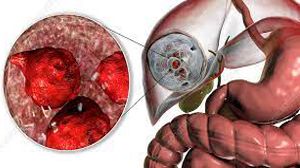Laparoscopic Surgery Offers Effective Treatment for Subacute Small Bowel Obstruction
Add to
Share
1,504 views
Report
2 years ago
Description
Introduction: In the field of medicine, advancements in surgical techniques have revolutionized the way various conditions are treated. Laparoscopic surgery, also known as minimally invasive surgery, has gained widespread recognition for its numerous benefits over traditional open surgery. One such condition where laparoscopic surgery has proven to be highly effective is subacute small bowel obstruction. This essay explores the advantages and effectiveness of laparoscopic surgery in treating subacute small bowel obstruction, highlighting its role in providing minimally invasive relief to patients. Understanding Subacute Small Bowel Obstruction: Subacute small bowel obstruction refers to a partial or complete blockage of the small intestine, which often develops over a period of several days. It can occur due to various reasons, including adhesions, hernias, tumors, or inflammation. This condition can be extremely painful and debilitating, impacting a patient's quality of life and requiring prompt medical intervention. The Advent of Laparoscopic Surgery: Laparoscopic surgery has emerged as a groundbreaking approach in the field of abdominal surgery. Instead of the large incisions used in traditional open surgery, laparoscopic procedures involve making small keyhole incisions through which a laparoscope (a thin, lighted tube with a camera) and other specialized instruments are inserted. This allows surgeons to visualize the affected area and perform precise maneuvers with enhanced dexterity. Advantages of Laparoscopic Surgery for Subacute Small Bowel Obstruction: Minimally invasive: The primary advantage of laparoscopic surgery is its minimally invasive nature. The smaller incisions result in reduced trauma to the surrounding tissues, leading to less pain, minimal scarring, and quicker recovery compared to open surgery. Faster recovery time: Patients who undergo laparoscopic surgery for subacute small bowel obstruction typically experience shorter hospital stays and quicker recovery times. This enables them to resume their daily activities and routines more rapidly, improving their overall quality of life. Reduced risk of complications: Laparoscopic surgery minimizes the risk of postoperative complications, such as wound infections, incisional hernias, and bowel adhesions. The smaller incisions also decrease the likelihood of blood loss during the procedure, lowering the need for blood transfusions. Enhanced visualization and precision: The laparoscope provides high-definition imaging of the affected area, enabling surgeons to visualize the obstruction and surrounding structures with great clarity. This enhances their ability to precisely identify and address the cause of the obstruction, leading to improved outcomes. Improved cosmesis: Laparoscopic surgery offers better cosmetic results due to the smaller incisions, resulting in minimal scarring. This can have a positive psychological impact on patients, boosting their self-esteem and body image. Laparoscopic surgery has emerged as a game-changing technique in the field of abdominal surgery, particularly for the treatment of subacute small bowel obstruction. This condition, characterized by a partial or complete blockage of the small intestine, can cause severe pain and discomfort, impacting the overall well-being of patients. However, with the advent of laparoscopic surgery, patients can now benefit from minimally invasive relief. Unlike traditional open surgery, laparoscopic procedures involve making small keyhole incisions through which a laparoscope and specialized instruments are inserted. This allows surgeons to visualize the affected area with the help of a camera and perform precise maneuvers with enhanced dexterity. The minimally invasive nature of laparoscopic surgery brings several advantages. Patients experience less pain, have smaller scars, and enjoy faster recovery times compared to open surgery. Moreover, laparoscopic surgery significantly reduces the risk of postoperative complications such as infections, hernias, and bowel adhesions. The smaller incisions also minimize blood loss during the procedure, leading to decreased reliance on blood transfusions. With the aid of high-definition imaging provided by the laparoscope, surgeons can accurately identify and address the cause of the obstruction, improving overall treatment outcomes. Beyond the physical benefits, laparoscopic surgery offers improved cosmesis due to minimal scarring. This can have a positive psychological impact, boosting patients' confidence and self-image. Additionally, the shorter hospital stays and quicker recovery times associated with laparoscopic surgery allow patients to resume their daily activities sooner, enhancing their quality of life. In summary, laparoscopic surgery has revolutionized the treatment of subacute small bowel obstruction. By providing minimally invasive relief, it offers patients a more comfortable and efficient alternative to traditional open surgery. With its numerous advantages, including reduced trauma, faster recovery, decreased complications, enhanced visualization, and improved cosmesis, laparoscopic surgery continues to play a pivotal role in improving the lives of patients suffering from subacute small bowel obstruction. Conclusion: Laparoscopic surgery has revolutionized the treatment of subacute small bowel obstruction by offering a highly effective and minimally invasive approach. The numerous advantages it provides, including reduced trauma, faster recovery, decreased risk of complications, enhanced visualization, and improved cosmesis, make it a preferred choice for patients and surgeons alike. As medical technology continues to advance, laparoscopic surgery will undoubtedly play a vital role in providing effective and efficient relief for patients suffering from subacute small bowel obstruction.
Similar Videos






